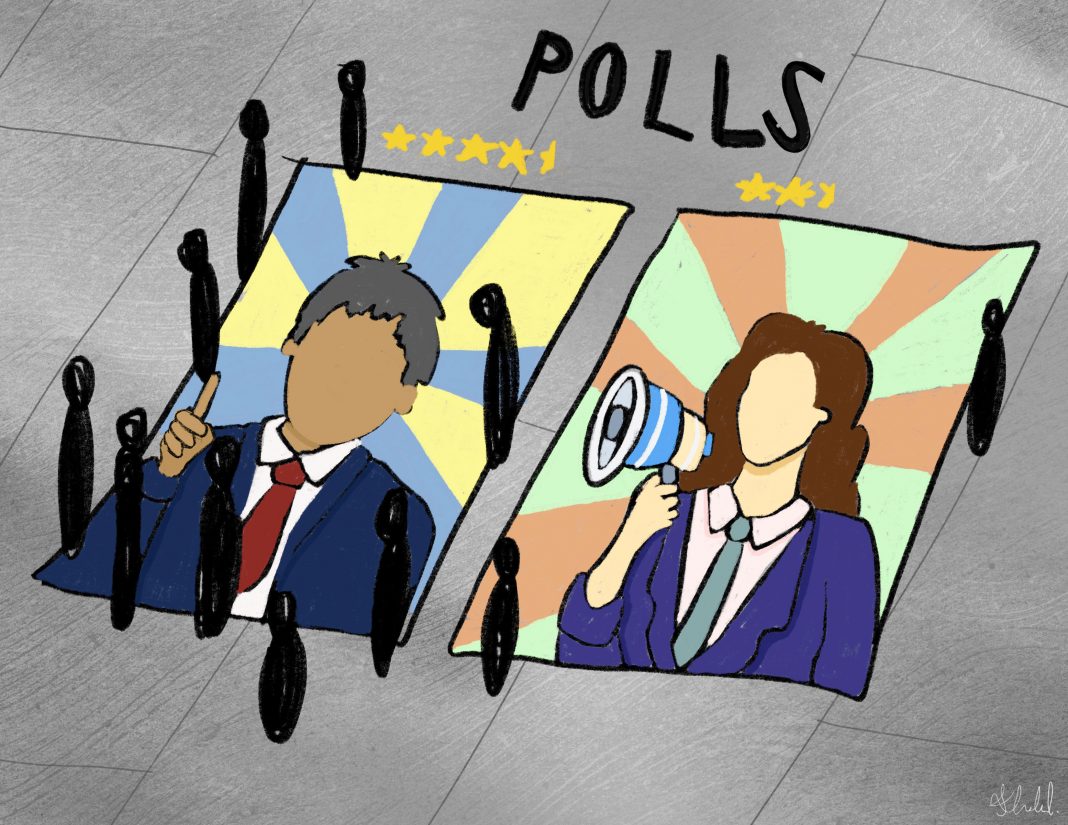In light of the 2019 Canadian federal election this October, CBC News conducted a survey profiling the disparities that exist between men and women in election campaigns. The survey found that in terms of women in Canadian politics, there were fewer women running for office, women were getting elected less often, and they were receiving less funding for their campaigns. The Medium sat down with UTM Women and Gender Studies professor and program director Dr. Joan Simalchik to discuss these findings.
Simalchik regards the existing disparities to be complicated. In society, Simalchik says, women are still seen as the primary caregivers. These “objective material realities” create barriers that “prevent women from accessing the political sphere.”
Considering the scrutiny women in politics face—scrutiny about “how they look, how they dress, how they age, their competence as caregivers, it’s amazing that women even put themselves out there,” explains Simalchik.
Elizabeth May, leader of the Green Party of Canada, is one of six national party leaders running for the 2019 Federal election. She is also the only female leader. Besides the “objective realities” which prevent women from running, Simalchik also names “subjective realities” that create barriers for women entering the political realm.
“Deeply entrenched cultural biases,” namely patriarchal beliefs that women lack the competence to involve themselves in politics, are issues that Simalchik labels as the “Wicked Problems.” She explains that these problems are difficult to come up with solutions for, as they require a paradigm shift that is hard to predict and complicated to initiate.
Policies that have barred women from voting in the past have changed; however, the beliefs which fueled the sexist policies are not as quick to shift. Policy change has allowed women such as May to enter politics. Unfortunately, entrenched beliefs that fuel gender stereotypes continue to translate into a lack of confidence in women’s political abilities, strains in financing campaigns, and a lack of effort to support female candidates.
According to CBC News, “women are more likely than men to find themselves in hard-to-win ridings,” another factor that limits women from winning in their riding. Women receive less funding: “$35,838 compared to $40,162 for men” according to the CBC’s analysis of Elections Canada’s findings. This statistic relates back to beliefs about women’s competence, says Simalchik.
CBC News also profiled Haley Brown, the 2015 Liberal candidate in the Calgary Midnapore riding, and used the story of her political campaign to review the stark gender gap that continues to exist in Canadian politics.
“At campaign events, I heard people calling me a sacrificial lamb,” Brown told the CBC. Brown entered political debates by herself while her opposition, Jason Kenney, was surrounded by his entire team. Theory states that women are equal to men in competence and in political ability, but the climate women are encountering in the political sphere suggests they are treated as less-than.
“Praxis,” advises Simalchik. There is a need to mobilize theory, to put it into practice and see theory reflected in policy. Rather than saying “equality has been achieved,” we need to embody it, says Simalchik. She suggests that policies which prioritize the political campaigns of women and which support national day care can help mitigate the limitations that women face in the political sphere.
Simalchik concludes by cautioning that without women in politics, “we lose a significant point of view.”



